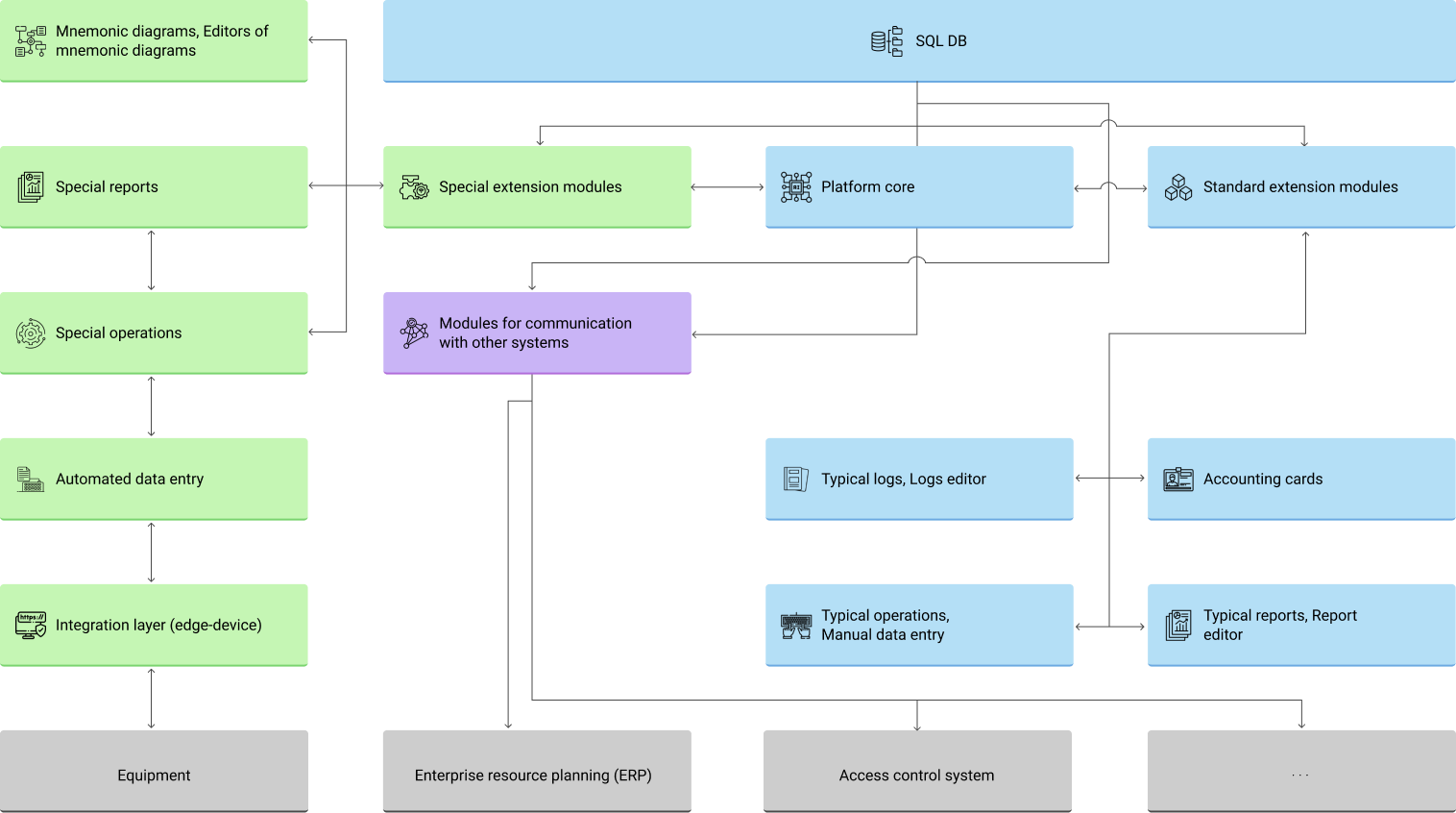Configuration
Atomic Keeper is an automated system for accounting and control of nuclear materials based on the Universal Accounting Platform (UAP).
The UAP is a solution for efficient management of data and operations at enterprises with non-standard accounting tasks. The platform can be extended with additional modules providing specific functionality for a particular solution. The UAP is designed as a multi-user system, with differentiation of access rights depending on the performed actions and belonging to certain departments of the organization.
The UAP allows to organize basic accounting of integral and separable entities, to perform their inventory, to register changes of state and properties, as well as to link all actions (operations) on entities with their storage locations and personnel of the organization.
Basic concepts of the UAP:
- Entity: the basic object upon which operations are performed in the system. For example, the entity ‘accounting unit’ can have its own accounting card.
- Operation: an action that changes the state of an entity.
- Ledger: a system for recording changes to entity properties.
- Report: a representation of the state of selected entities at a certain point in time or during a certain period.
- Final data: the results of operations and groups of operations, presented in the form of mini-reports or log extracts.
Modularity and extensibility:
The UAP is built on a basic skeleton and is designed to be expanded with separate modules that can be developed both within the company and outside the company. This provides the necessary flexibility and adaptability to the unique demands of each organization.

Types of modules:
- Basic modules: provide basic functionality and operation of the platform.
- Additional modules: solve specific tasks and are responsible for operation with equipment.
- Integration modules: provide interaction with other systems.
System configuration:
The universal accounting platform is customized to the specific demands of the customer by configuration. This process includes the description of the types of accounted entities, their properties and relationships, as well as other information specific to a particular delivery (e.g., location schemes, lists of employees, employment sheets, etc.). The description of the configuration of accounting unit types and their properties is performed in a special configurator.
Modules interact with the configuration through categories, which define the corresponding types of objects and their properties. A category is a label that is assigned to an entity, which corresponds to a certain set of properties. Each category defines specific characteristics and capabilities for accounting units within the corresponding operations or functions.
Types of categories: employee, catalog, document, accounting unit, reports and ledgers, etc. One module can use several categories, including categories that are used by other modules. This provides flexibility and usability in system management.
Conclusion:
Atomic Keeper, based on the Universal Accounting Platform with flexible architecture and configurability, is a solution that meets modern requirements for nuclear material accounting. Its modularity and extensibility allow the system to be adapted to the customer's specific processes, ensuring high performance, efficient control of accounting materials and data security.